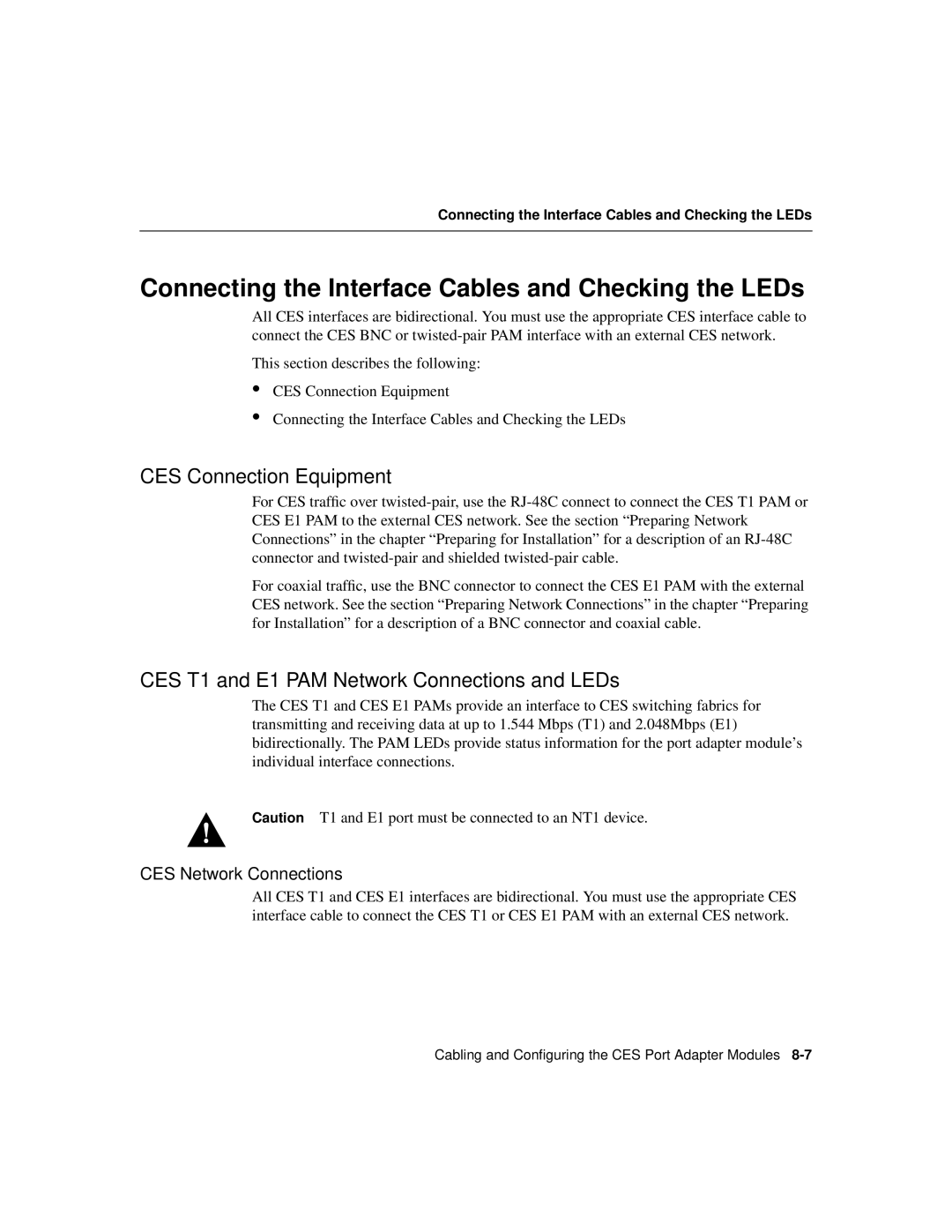
Connecting the Interface Cables and Checking the LEDs
Connecting the Interface Cables and Checking the LEDs
All CES interfaces are bidirectional. You must use the appropriate CES interface cable to connect the CES BNC or
This section describes the following:
•
•
CES Connection Equipment
Connecting the Interface Cables and Checking the LEDs
CES Connection Equipment
For CES traffic over
For coaxial traffic, use the BNC connector to connect the CES E1 PAM with the external CES network. See the section “Preparing Network Connections” in the chapter “Preparing for Installation” for a description of a BNC connector and coaxial cable.
CES T1 and E1 PAM Network Connections and LEDs
The CES T1 and CES E1 PAMs provide an interface to CES switching fabrics for transmitting and receiving data at up to 1.544 Mbps (T1) and 2.048Mbps (E1) bidirectionally. The PAM LEDs provide status information for the port adapter module’s individual interface connections.
Caution T1 and E1 port must be connected to an NT1 device.
CES Network Connections
All CES T1 and CES E1 interfaces are bidirectional. You must use the appropriate CES interface cable to connect the CES T1 or CES E1 PAM with an external CES network.
Cabling and Configuring the CES Port Adapter Modules
